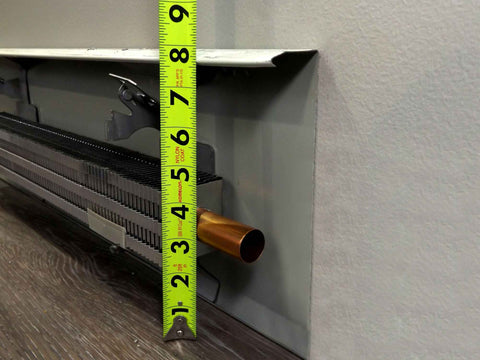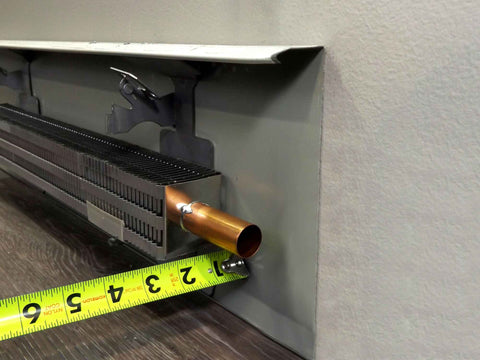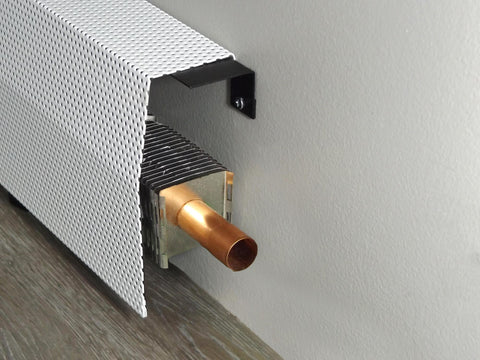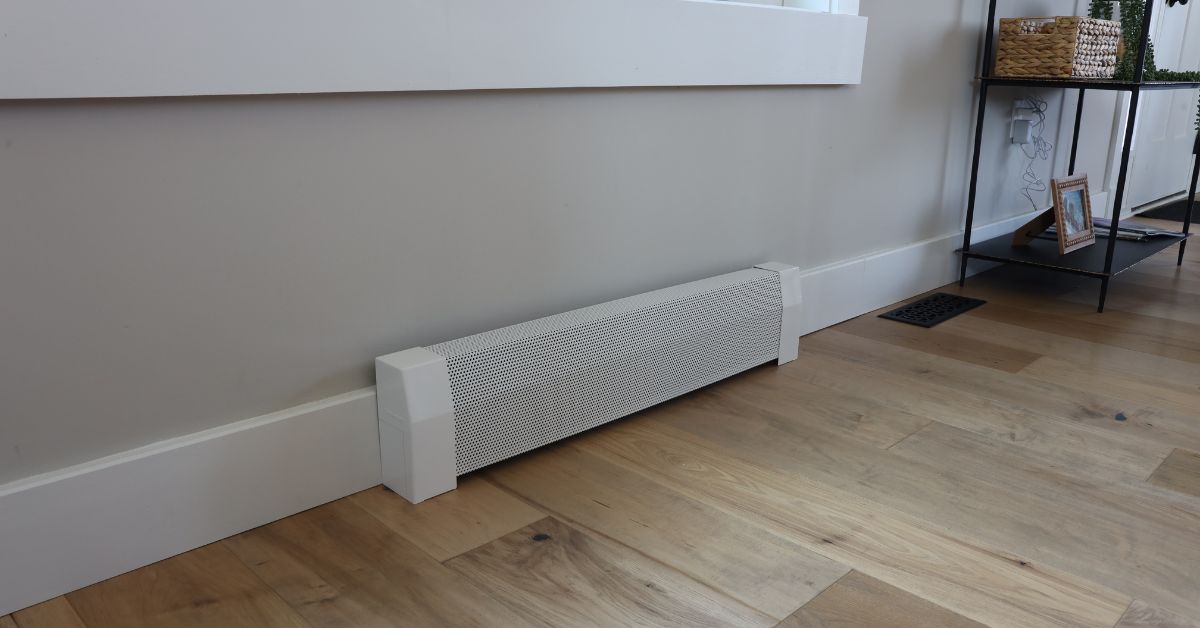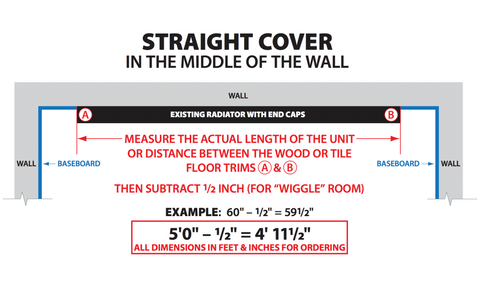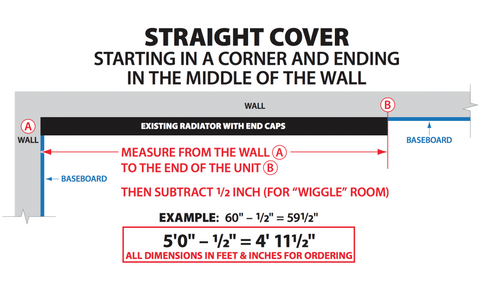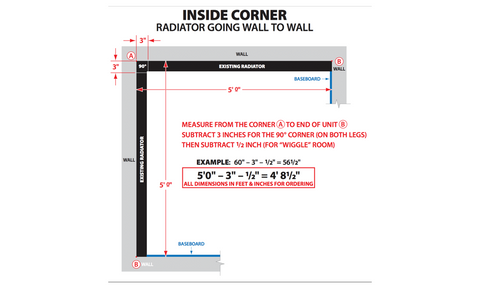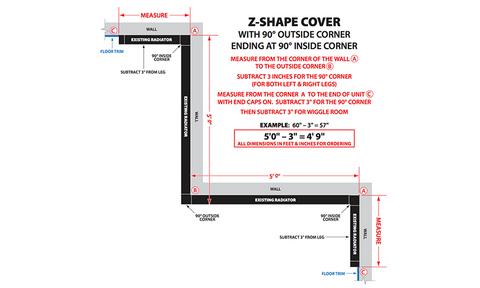Hydronic baseboard heaters are a popular choice for efficient and reliable home heating. However, like any heating system, they require care to ensure they function safely. One of the most crucial aspects of maintaining a hydronic baseboard heater is adhering to safety clearances. This guide to hydronic baseboard heater safety clearances will help you protect your home.
What Are Hydronic Baseboard Heaters?
Hydronic baseboard heaters are an efficient, modern solution for heating homes and buildings. Unlike traditional electric baseboard heaters, these systems rely on liquids like hot water circulating through the unit.
A boiler heats the liquid and radiates warmth into the surrounding space as it flows through the heater. This method provides a consistent and even heat that is more comfortable than other forms of heating.
Advantages of Hydronic Baseboard Heaters
One key benefit of hydronic baseboard heaters is their energy efficiency. Because they use radiant heat, they can maintain consistent temperatures for longer periods without frequent cycling on and off.
Additionally, they operate quietly. They’re an excellent choice for bedrooms, offices, or any space where peace and quiet are a priority. Hydronic baseboard heaters also offer design flexibility, with sleek profiles that blend seamlessly into any room.
The Importance of Safety Clearances
Safety clearances are the minimum distance that must be maintained between a hydronic baseboard heater and other objects to conduct safe, efficient operation. These clearances are crucial for several reasons:
-
• Prevent overheating. Allowing adequate space around the heater dissipates heat properly and decreases the risk of overheating.
-
• Improve airflow. Clearances facilitate proper airflow, which is essential for efficient heating and preventing heat buildup on surrounding materials.
-
• Minimize fire risks. Maintaining safe distances from flammable objects like furniture, curtains, or rugs mitigates the risk of sparking a fire.
-
• Provide long-lasting heat. Following safety clearance guidelines can extend the life of the heating unit by preventing unnecessary strain or damage.
Adhering to safety clearances is not only a best practice; it’s crucial to protecting your home and those within it. Understanding how to maintain these clearances will help you get the most from your heater while avoiding potential hazards.
Hydronic Baseboard Heater Safety Tips and Clearances
Homeowners will gain the most benefits from hydronic baseboard heaters when they follow key safety measures.
Follow Manufacturer Guidelines and Local Building Codes
Proper installation is the first step to ensuring safety with a hydronic baseboard heater. Always follow the installation instructions provided by the manufacturer. These guidelines ensure the system operates safely and protect your home.
Additionally, adhere to local building codes, which may include specific requirements for clearances and installation. It’s recommended to choose professional installation to avoid future complications with your hydronic baseboard heater.
Keep Flammable Objects at a Safe Distance
Flammable objects like curtains, rugs, and furniture should never be too close to the heater. A general rule of thumb is maintaining at least a 12-inch clearance around the unit unless the manufacturer specifies otherwise. This distance prevents heat from accumulating on materials that could potentially catch fire. Take care when arranging furniture to avoid blocking the front of the heater.
Regularly Inspect the System for Damage or Errors
Like any appliance, a hydronic baseboard heater can experience wear and tear over time. Regularly inspecting the unit for signs of damage, corrosion, or leaks is critical. Look for discoloration, strange noises, or reduced heating performance. Catching and addressing minor issues early will prevent them from becoming hazardous problems.
Install a Carbon Monoxide Detector
Although hydronic baseboard heaters are generally safe, installing a carbon monoxide detector nearby is a wise precaution, especially if the system runs on natural gas. Carbon monoxide is a harmful, odorless gas that could linger in the air if the system malfunctions. A detector serves as an added layer of safety, providing immediate warnings if any issues arise.
Don’t Obstruct Airflow Around the Heater
For hydronic baseboard heaters to work effectively, airflow must remain unobstructed. It may be tempting to use your baseboard heater for extra storage or decoration—placing items like blankets or pillows on it—but this is a significant safety hazard.
Covering the heater can cause it to overheat, potentially damaging the unit and increasing the risk of fire. Blocked airflow can reduce the heater’s efficiency and lead to overheating. Avoid placing objects such as books, toys, pillows, and more on top of the unit.
Keep the Heater Clean and Dust-Free
Like all appliances, hydronic baseboard heaters perform best when they are clean. Dust and debris can accumulate on or around the unit over time, impeding airflow and efficiency. To maintain peak performance, vacuum the heater’s exterior and check for any blockages in vents.
Protect Children and Pets
Hydronic baseboard heaters can be hot to the touch, so keeping children and pets at a safe distance is important. Educate household members about the potential danger of coming into contact with the heater.
Install a Safety Barrier or Guard
Installing a safety barrier or heater guard is an excellent way to add an extra layer of protection, especially if you have children or pets. These guards can help prevent accidental contact and shield the heater from any unintended damage caused by external objects.
Inspect Electrical Wiring
Check that all wires are intact if the hydronic baseboard heater connects to a power source. Frayed or exposed wiring can lead to electrical hazards, fires, and malfunctions. Periodically check the wiring or hire a professional to examine it for you.
Stay Safe and Warm With EZ Snap Covers
Hydronic baseboard heaters are an excellent choice for efficient, quiet, and consistent heating, but their safety depends on proper usage and maintenance. Following this guide to safety clearances for hydronic baseboard heaters will help homeowners protect their properties while enjoying comfort and warmth.
If you want to enhance your heater’s safety and appearance, check out EZ Snap Covers for stylish, durable baseboard covers. These covers improve the aesthetic of your heater and increase safety for all residents. Visit our website to learn why our USA-made products will add the extra layer of protection your home needs.
